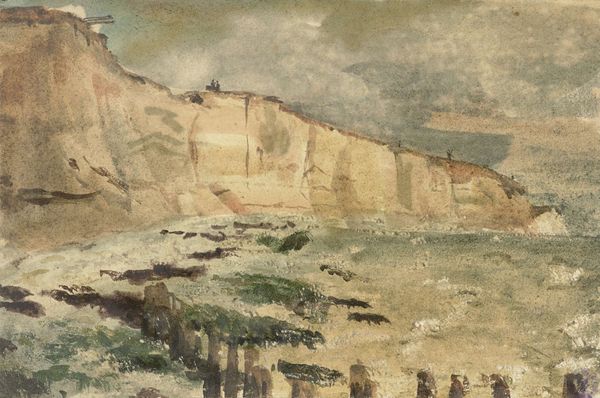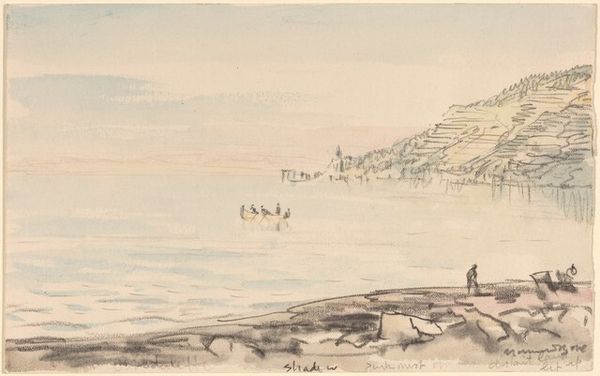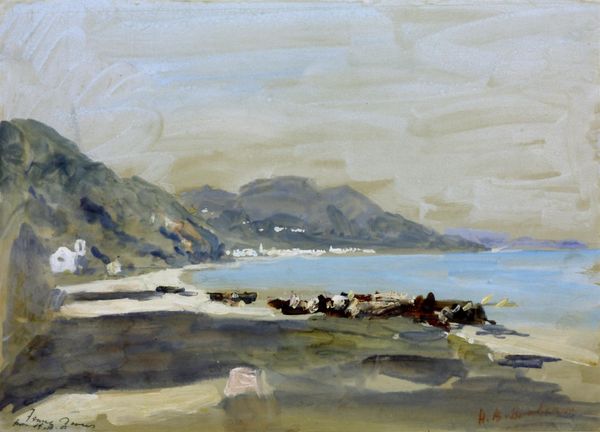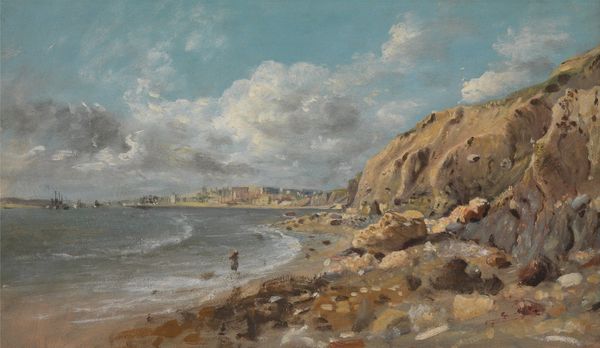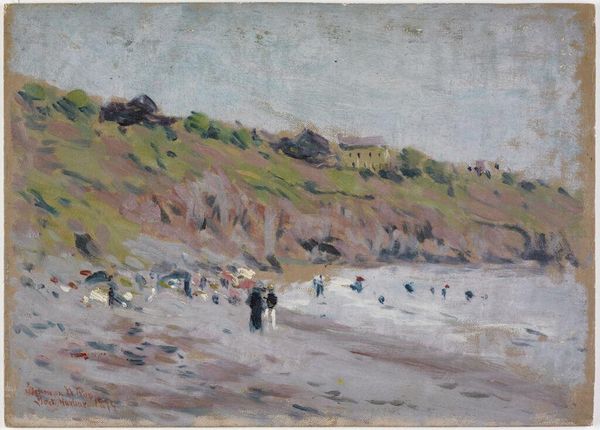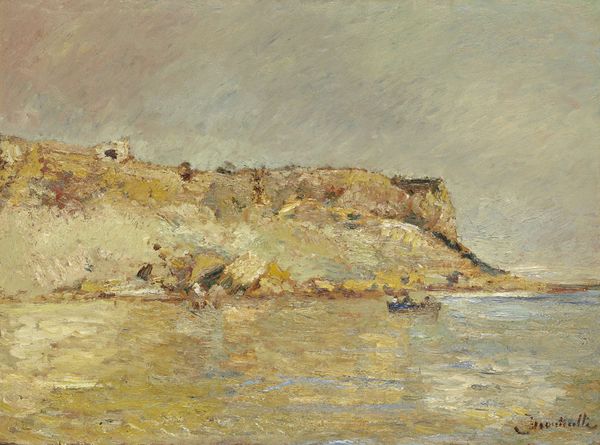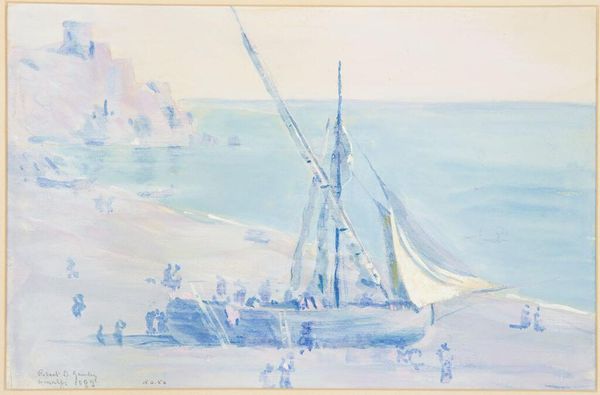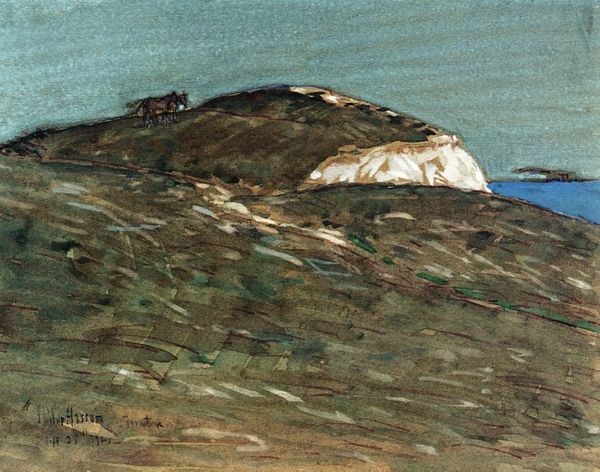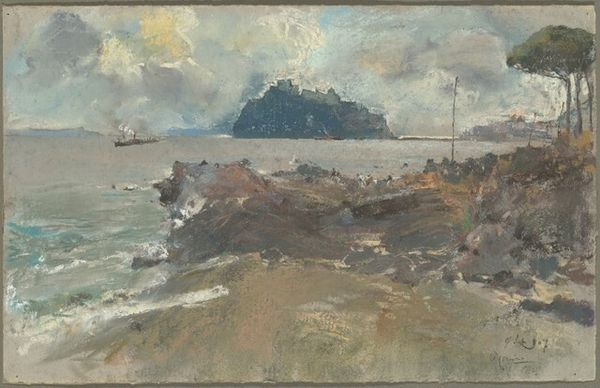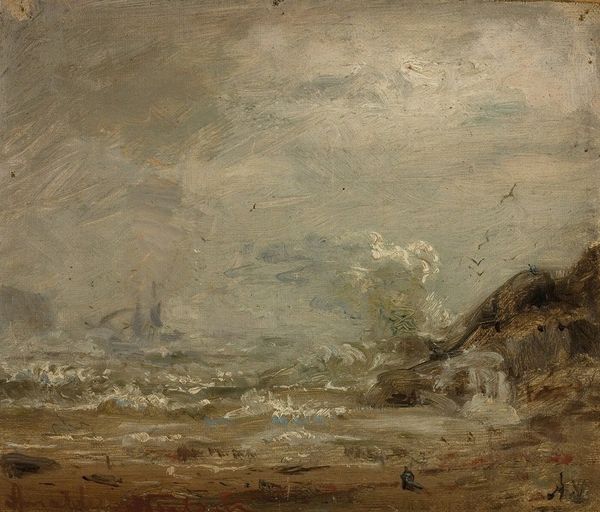
Copyright: Public domain
Editor: Here we have Maximilien Luce’s "Les Terrils, Charleroi" painted in 1896, using oil. The colors are muted and grey, almost melancholic, with a large structure dominating the scene. How would you interpret this piece, looking at the formal qualities? Curator: Precisely. Let us examine the compositional strategies at play. Note how the artist employs a tripartite division of space: the foreground depicting the figures and desolate terrain, the mid-ground dominated by the imposing terril, and the background with the factories looming. How do these strata interact, in your opinion? Editor: The contrast is quite stark. The figures seem dwarfed, almost consumed by the immensity of the artificial mountain, and then further back by the factories spewing smoke. Curator: Indeed. Consider the brushwork, the broken strokes, the application of color in juxtaposed touches. It suggests a world of constant transformation, yet held in a tense balance. Notice the geometric solidity of the terril contrasted to the soft forms of people. How does that play into a narrative reading of labour and the Industrial revolution, perhaps? Editor: I hadn’t considered that angle but thinking of it that way, I can see a commentary about humanity's relationship with industry embedded in the work. Curator: The formal tensions in this painting invite precisely that. Do you agree that considering how lines, shapes, and forms relate, reveals social commentary? Editor: Absolutely! Examining the intrinsic qualities sheds light on its deeper themes. Thank you, this has made the painting far more impactful to me. Curator: My pleasure. I trust you recognize the value of semiotic analysis and visual rhetoric for this artwork.
Comments
No comments
Be the first to comment and join the conversation on the ultimate creative platform.
